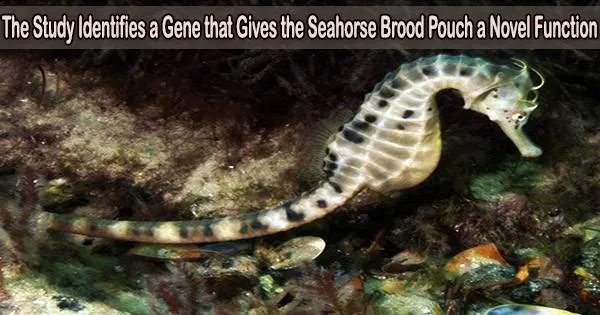Among the wide group of teleost fish, seahorses exhibit a distinctive form. Flame cone cells, a peculiar epithelial cell type, are present in the seahorse’s distinguishing spines and brood pouch and are protected by a mucous cap. The seahorse is a unique and fascinating marine creature known for its distinct appearance and interesting behaviors.
The barbed pipefish Urocampus nanus and the seaweed pipefish Syngnathus schlegeli, near relatives of the seahorse and members of the Syngnathidae lineage, do not, however, possess these cells. The purpose of flame cone cells has been theorized through study, although it is still unclear where these cells came from in terms of evolution.
Now, a team of scientists led by Assoc. Prof. Mari Kawaguchi and Prof. Shigeki Yasumasu from the Department of Materials and Life Sciences at Sophia University has identified an “orphan” gene a gene with no identifiable homologous sequences in other species or lineages in the seahorse Hippocampus abdominalis.
The evolutionary history of the pgrich gene may provide clues as to how the orphan gene came to be and how the brood pouch developed in this lineage. Seahorses are popular in home aquariums, and understanding these phenomena will contribute to people’s fascination with these fish.
Professor Mari Kawaguchi
The proline-glycine rich (pgrich) gene is thought to play a role in the formation of the flame cone cells in the brood pouch. Their findings were published in the journal Cell and Tissue Research, on 25th May 2023.
Expanding the reason behind pursuing this investigation, Dr. Kawaguchi says, “Seahorses have fascinating morphology, and males carry embryos in their brood pouch. The occurrence of male seahorses giving birth is a rare phenomenon in the animal kingdom and makes the seahorse a model organism to study evolution. We were keen to identify the genes responsible for forming the flame cone cells in the brood pouch.”
The team first paired histological staining with electron microscopy to confirm that the flame cone cells were present on the outer epithelium of the brood pouch in H. abdominalis, but not in U. nanus or S. schlegeli.
Additionally, the pgrich gene was expressed and its protein was localized in flame cone cells on the body’s surface, according to immunohistochemistry and in situ hybridization techniques.
The translated amino acid sequence derived from the antisense strand of the non-coding region of the larger pipefish elastin gene revealed some similarities with the amino acid sequences of the protein product of the pgrich gene, PGrich.
The team discovered many transposable elements close to the pgrich gene using sequencing studies. They suggest that the elastin gene in pipefish may have evolved into the pgrich gene, which then acquired a novel function in the development of flame cone cells, which are specific to seahorses.
As the team continues to piece together the evolution of the seahorse brood pouch, Dr. Kawaguchi concludes, “The evolutionary history of the pgrich gene may provide clues as to how the orphan gene came to be and how the brood pouch developed in this lineage. Seahorses are popular in home aquariums, and understanding these phenomena will contribute to people’s fascination with these fish.”
















